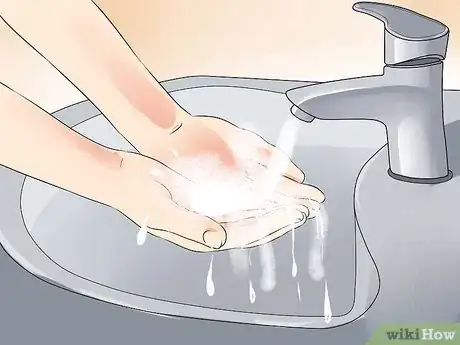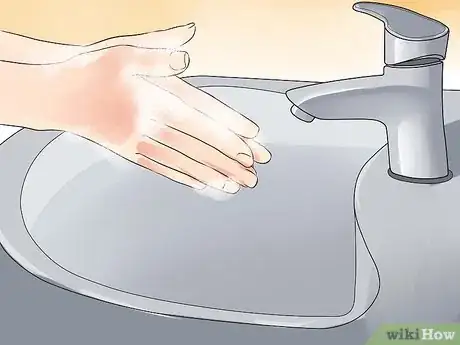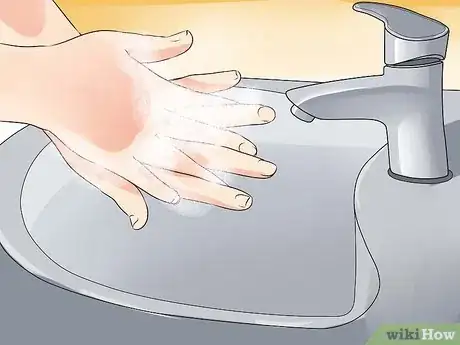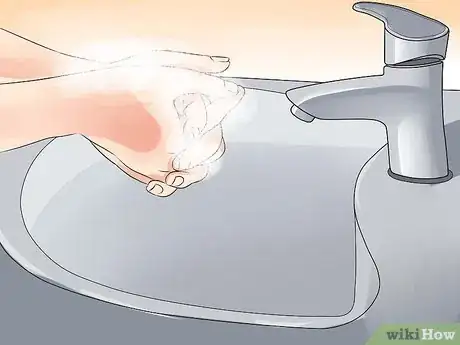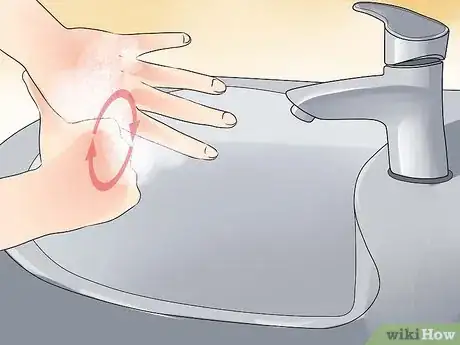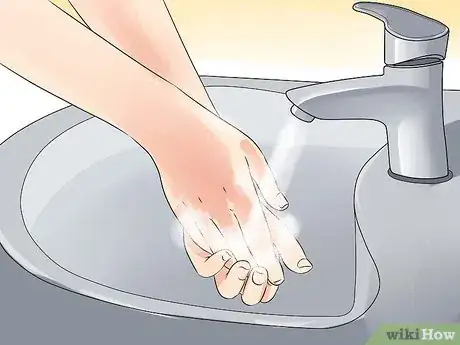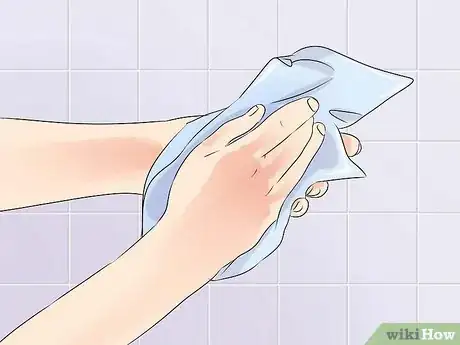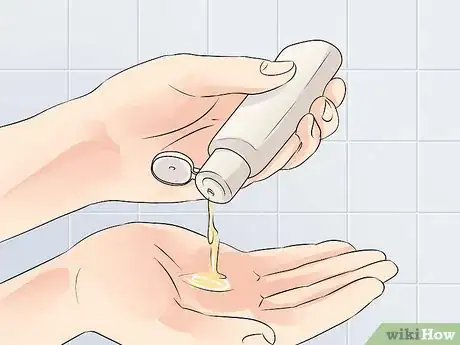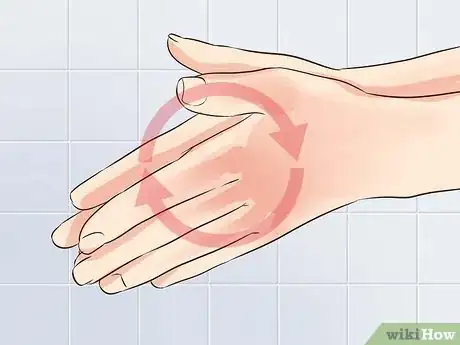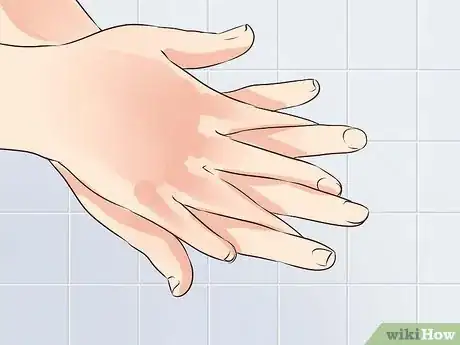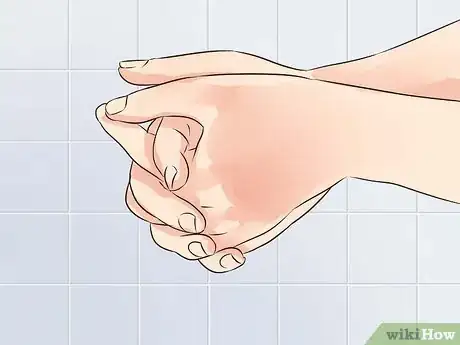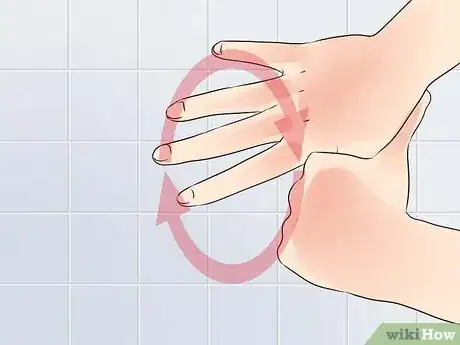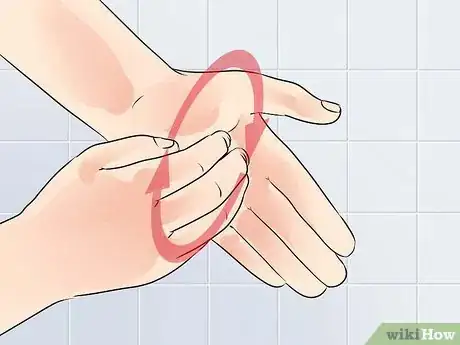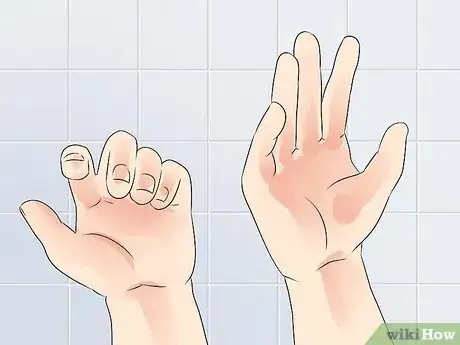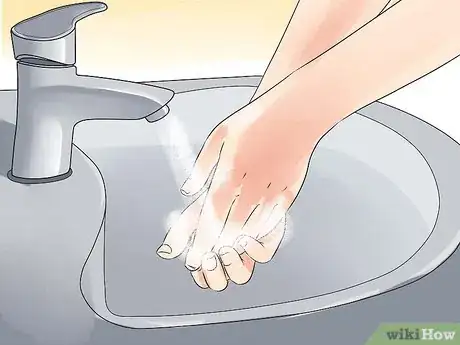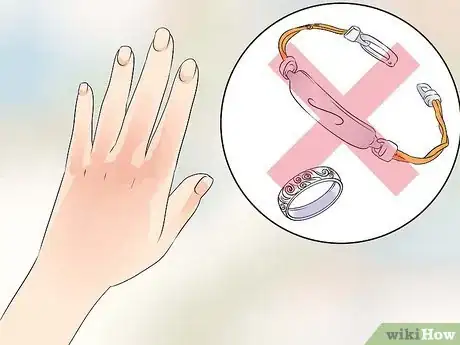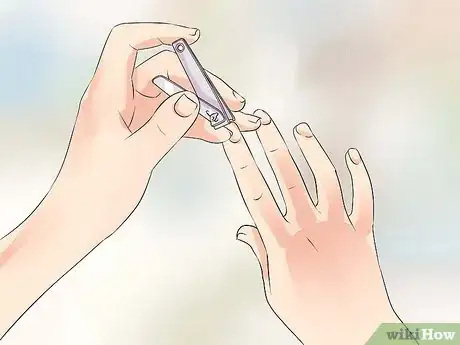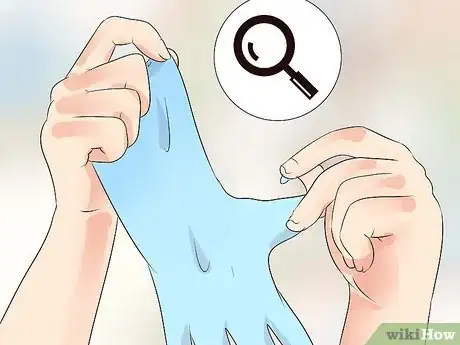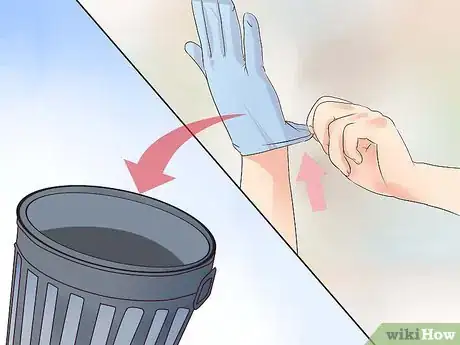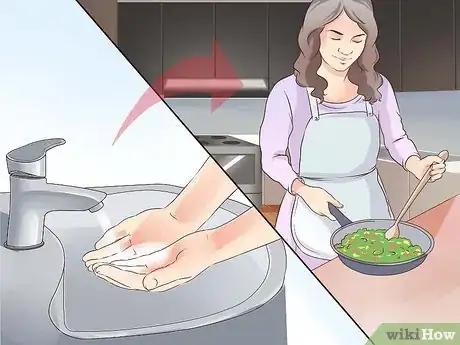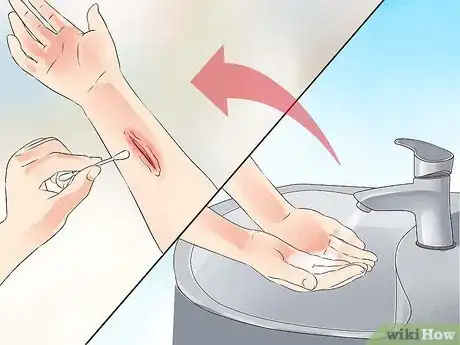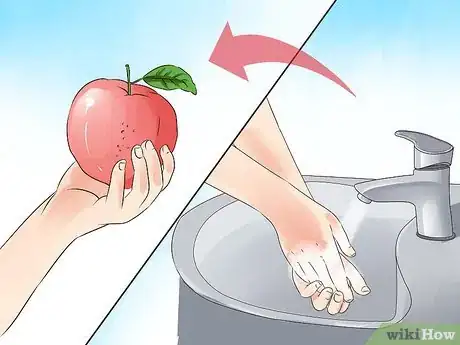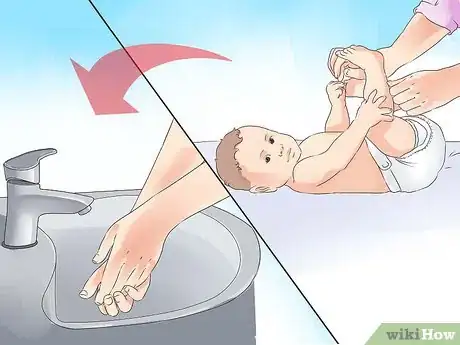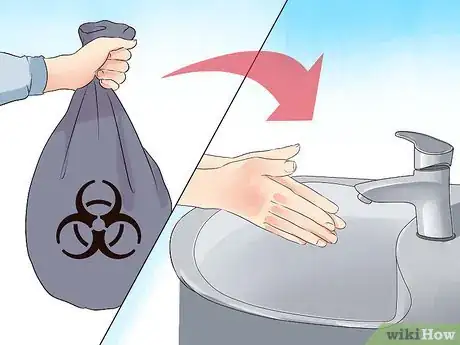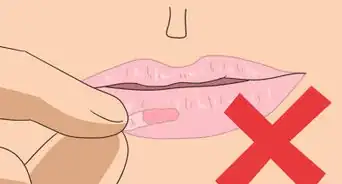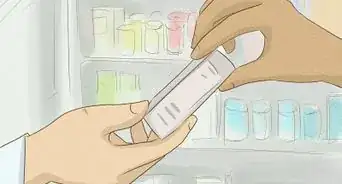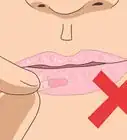This article was medically reviewed by Mark Ziats, MD, PhD. Dr. Mark Ziats is an Internal Medicine Physician, Scientist, Entrepreneur, and the Medical Director of xBiotech. With over five years of experience, he specializes in biotechnology, genomics, and medical devices. He earned a Doctor of Medicine degree from Baylor College of Medicine, a Ph.D. in Genetics from the University of Cambridge, and a BS in Biochemistry and Chemistry from Clemson University. He also completed the INNoVATE Program in Biotechnology Entrepreneurship at The Johns Hopkins University - Carey Business School. Dr. Ziats is board certified by the American Board of Internal Medicine.
There are 14 references cited in this article, which can be found at the bottom of the page.
This article has been viewed 51,127 times.
Good hand hygiene is one of the basics of medical practice. It is often one of the first lines of defense against infections. Good hand hygiene is a fundamental skill for any professional working within a healthcare environment, any employee working in food service, or anyone who simply wants to stay healthy and safe.
Steps
Washing Your Hands with Soap and Water
-
1Wet hands. Wet both hands with running water. Warm or hot water is best, but cold water may be acceptable.[1]
-
2Apply soap. Dispense a generous amount of liquid soap into your palm. Liquid soap is preferable.[2]
-
3Rub your palms together. Spread soap onto both palms. Be sure this area is sufficiently covered by soap.
-
4Place the palm of the right hand over the back of the left hand and rub. Repeat this action with the left hand over the right. This will spread soap onto the backs of both hands. Be sure this area is sufficiently covered by soap.[3]
-
5Interlace the fingers of both hands. Spread soap between your fingers. Move your fingers back and forth to ensure that soap reaches all areas between your fingers.[4]
-
6Place the backs of fingers onto opposing palms. Interlock your fingers. This ensures that soap reaches the very back of your fingers. [5]
-
7Use rotational rubbing on each thumb. “Rotational rubbing” simply means to rub in a circular motion. Use the palm of one hand to wash the thumb of the opposite hand by way of rotational rubbing. Repeat this on the other side.[6]
-
8Use rotational rubbing to clean the palm of each hand again. Bring the fingers of one hand together. Use these fingers to wash the opposite palm by way of rotational rubbing. Repeat this on the other side.[7]
-
9Clean your wrists. Use one hand to clean the opposite wrist by way of rotational rubbing. Repeat this on the other side.[8]
-
10Rinse. Place your hands under running water. Remove all traces of soap. Again, warm water is preferred, but cold water may be acceptable.
-
11Dry your hands thoroughly. Use a clean disposable towel. Dry your hands until no wetness remains. Dispose of used towels right away.[9]
Cleaning your Hands with an Alcohol Rub
-
1Dispense a palmful of alcohol rub into a cupped hand. Use enough alcohol rub to cover the skin of both hands.
- This method should only be used if hands are not visibly soiled, or if washing with soap and water is not possible.[10] It should not be used if you have open cuts on your skin.
-
2Rub your palms together. Spread product onto both palms. Be sure this area is sufficiently covered by alcohol rub.
-
3Place the palm of the right hand over the back of the left hand and rub. Repeat this action with the left hand over the right. This will spread product onto the backs of both hands. Be sure this area is sufficiently covered by alcohol rub. [11]
-
4Interlace the fingers of both hands. Spread alcohol rub between your fingers. Move your fingers back and forth to ensure that product reaches all areas between your fingers.[12]
-
5Place the backs of fingers onto opposing palms. Interlock your fingers. [13] This ensures that the product reaches the very back of your fingers.
-
6Use rotational rubbing on each thumb. “Rotational rubbing” simply means to rub in a circular motion. Use the palm of one hand to distribute product onto the thumb of the opposite hand by way of rotational rubbing. Repeat this on the other side.
-
7Use rotational rubbing to distribute product to the palm of each hand again. Bring the fingers of one hand together. Use these fingers to distribute alcohol rub onto the opposite palm by way of rotational rubbing. Repeat this on the other side.
-
8Ensure that alcohol rub reaches your wrists. Use one hand to distribute alcohol rub onto the opposite wrist by way of rotational rubbing. Repeat this on the other side.
-
9Allow your hands to dry. You will not need disposable towels. Simply wait a few moments. Once dry, your hands are clean.[14]
Wearing Disposable Gloves
-
1Wash your hands. Wash your hands with soap and water. Make sure all parts of your hands and wrists are properly cleansed. Dry your hands completely using a disposable towel.[15]
-
2Cover any cuts or lesions. Any place where you skin is broken must be protected. Apply a waterproof dressing to all cuts and injuries, even very small ones.
-
3Remove any jewelry. Remove any rings or bracelets from your hands and store them in a safe place. Jewelry (even plastic jewelry) can easily damage your gloves.
-
4Ensure nails are short. Take a moment to look at your finger nails. They should be kept short. If fingernails are too long, take some time to groom them.
-
5Check gloves for tears. Look over each glove carefully. Ensure that each gloves in in tact, and free from any imperfections.[16] If you notice any problems with the gloves, dispose of them and begin again with a new pair.
-
6Put gloves on your clean hands. Carefully place your hands into the gloves one at a time. Be sure that each finger fits into its proper slot. The gloves should fit well, but not too tight.
-
7Remove gloves carefully and dispose of them right away. When you are finished using the gloves, remove each one by carefully pealing back from the wrist opening. Dispose of used gloves immediately in the proper receptacle.
-
8Wash your hands after removing gloves. Wash your hands with soap and water. Again, make sure all parts of your skins are properly cleansed. Dry your hands completely using a disposable towel [17]
Deciding When to Wash Your Hands
-
1Wash your hands before preparing food or eating. Any time you will be working with food, you should first stop and make sure your hands are sanitary. This is true both if you are preparing food for others, or simply making a snack at home for yourself.[18]
-
2Wash your hands before treating wounds, giving medicine, or caring for a sick person. Whenever you are treating an injury or sickness, you need to take special care not to spread bacteria. Stop and wash your hands before dealing with the illness or injury at hand.[19]
-
3Wash your hands after handing food, especially raw meat or poultry. Raw meat or poultry can potentially contain bacteria, such as E. coli or salmonellosis. Always wash your hands after preparing or handling food.
-
4Wash your hands after using the bathroom or changing a diaper. Like raw meat, human excrement may contain large amounts of E. coli bacteria. Wash your hands after using the bathroom, changing a baby, or even scrubbing your toilet at home.[20]
-
5Wash your hands after handling anything that may be contaminated. This can include garbage, household cleaning supplies, or garden chemicals. Garbage can contain many different types of bacteria from rotting food and other items. Household cleaners and other chemicals are also dangerous for your health. Wash your hands after touching anything you think might be dangerous.[21]
Things You'll Need
- A sink
- Running water
- Liquid soap
- Alcohol rub
- Disposable gloves
References
- ↑ http://www.cdc.gov/handwashing/when-how-handwashing.html
- ↑ http://www.cdc.gov/HandHygiene/download/hand_hygiene_core_minus_notes.pdf
- ↑ http://www.webmd.com/cold-and-flu/tc/hand-washing-topic-overview
- ↑ http://www.who.int/gpsc/5may/How_To_HandWash_Poster.pdf
- ↑ https://www.hha.org.au/component/jdownloads/send/5-local-implementation/76-poster-who-2
- ↑ https://www.hha.org.au/component/jdownloads/send/5-local-implementation/76-poster-who-2
- ↑ https://www.hha.org.au/component/jdownloads/send/5-local-implementation/76-poster-who-2
- ↑ http://www.webmd.com/cold-and-flu/tc/hand-washing-topic-overview
- ↑ http://www.mayoclinic.org/healthy-lifestyle/adult-health/in-depth/hand-washing/art-20046253
- ↑ http://www.mayoclinic.org/healthy-lifestyle/adult-health/in-depth/hand-washing/art-20046253?pg=2
- ↑ https://www.hha.org.au/component/jdownloads/send/5-local-implementation/75-poster-who-1
- ↑ https://www.hha.org.au/component/jdownloads/send/5-local-implementation/75-poster-who-1
- ↑ https://www.hha.org.au/component/jdownloads/send/5-local-implementation/75-poster-who-1
- ↑ http://www.webmd.com/cold-and-flu/tc/hand-washing-topic-overview
- ↑ http://here.doh.wa.gov/materials/how-to-use-disposable-gloves/64_UseGloves_E10H.pdf
- ↑ https://doh.sd.gov/documents/Food/Gloves.pdf
- ↑ http://here.doh.wa.gov/materials/how-to-use-disposable-gloves/64_UseGloves_E10H.pdf
- ↑ http://www.cdc.gov/handwashing/when-how-handwashing.html
- ↑ http://www.cdc.gov/handwashing/when-how-handwashing.html
- ↑ http://kidshealth.org/en/kids/post-flush.html
- ↑ http://www.mayoclinic.org/healthy-lifestyle/adult-health/in-depth/hand-washing/art-20046253?pg=1
About this article
To make your own disinfectant hand wipes, first mix ⅔ cup (160 mL) of 99% rubbing alcohol and ⅓ cup (80 mL) of aloe vera gel. The rubbing alcohol will kill germs and viruses on your hands, and the aloe vera gel will help keep your hands moisturized. Pour the mixture into a clean plastic container and close the lid tightly. When you’re ready to use a hand wipe, squeeze some of the disinfectant onto a paper towel or tissue. Then, wipe your hands thoroughly and let them air dry. For more tips from our Medical co-author, including how to clean your hands with alcohol, keep reading!
